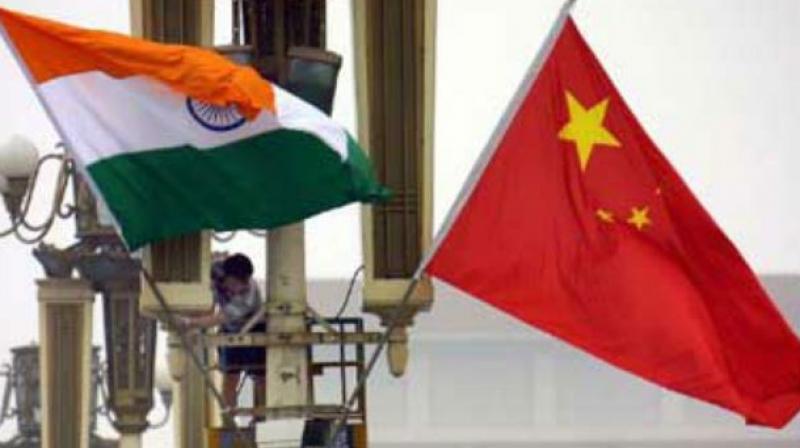Media reports indicate that in accordance with the agreement reached during the Corps commanders' meeting on 30 June " followed by Ajit Doval-Wang Yi conversation on 6 July " both sides are implementing a phased and stepwise disengagement and de-escalation process that is quite complex and subject to multiple and mutual verifications.
Tentative or marginal, withdrawal of troops is good news. A military confrontation with China is not in India's interest even though we must be (and are) prepared for it. However, the nascent disengagement process has given rise to noticeable optimism in India that the crisis is over for now and China's malicious actions have been thwarted.
Has India "pushed back" China?
This optimism has given rise to a media narrative that India has "pushed back" China with its muscular response. The narrative holds that after the deadly clash at the Galwan Valley on 15 June " marking first combat fatalities between both sides where India lost 20 jawans including a commanding officer while an undisclosed number of Chinese troops were killed " India's toughened posture has sobered up China.
Beijing has apparently been rattled by India's decisive political, military, strategic and economic steps " such as Prime Minister Narendra Modi's visit to Ladakh, defying China's force posturing at LAC and matching it with its own, rallying India's security and strategic partners around the globe, initiating an economic decoupling and taking punitive measures against Chinese tech companies. The argument goes that due to these actions, China has been forced to revise its assumption that India is 'soft', and accordingly it has taken a backward step. This presents a neat political narrative that reflects the strength of "New India", led by a leader who is decisive and strong.
Merits of the claim
This narrative has its uses. Some claims are not without merit. If the Galwan clash presented a tipping point in bilateral ties and brought both sides dangerously close to a military confrontation, the rearward movement of troops away from the LAC shows that the crisis management procedure is working. Prime Minister Narendra Modi deserves credit for deft political manoeuvring and managing the audience cost " all the more because India's democratic setup and free press impose greater public pressure on the leadership. This narrative is useful in avoiding the commitment trap in an outraged and injured nation.
As Casey Crisman-Cox and Michael Gibilisco argue in their paper Audience Costs and the Dynamics of War and Peace (2017) in American Journal of Political Science, "increases in a country's audience costs encourage it to initiate disputes in equilibrium, because the costs serve as a commitment device during the subsequent crisis, incentivizing the country to stand firm and coercing its opponent to back down."
To the extent that India now has a more clear-eyed China policy free from past cobwebs that New Delhi may be able to 'manage' China, normalise ties with its revanchist, authoritarian neighbour by boxing the border issue in a silo, be cooperative, avoid conflict by staying strategically neutral, enjoy peace and tranquillity at the border while focusing on its own development " Modi's speech in Ladakh indicates a tectonic shift. The prime minister emphasised that India will resist China's expansionism, assert its own sovereignty and meet Beijing's aggression with strength because "peace can never be brought by the weak". This overturns India's outdated policy assumption that creation of conditions for maintaining peace at the border areas is India's responsibility alone and New Delhi should remain sensitive to China's sensitivities and tread cautiously on the border issue as the price for peace.
If the asymmetry in national composite power between the two nations had compelled India to "manage" and "accommodate" China so that it may ensure peace on its frontiers, failure to recognise the shift in China's national objective from 1993 (when the first border agreement was struck) to the turn of this decade when Xi Jinping took over as the 'chairman of everything' also contributed to India's persistence with an obsolete policy till at least the turn of the last decade.
Coming to grips with Xi's China
The China of Deng Xiaoping who greeted a visiting Rajiv Gandhi in 1988, the China of 1993 or even 2005 that talked of 'Five Principles of peaceful co-existence' is different from the China under Xi that has abandoned the quest for stability and compromise in ties with regional actors and major powers in favour of unilateralism and arrogance and wants nations in the region to accept its primacy.
As professor Sonika Gupta writes in The Wire: "Since the mid-2000, veteran foreign policy officials like Ambassador Wu Jianmin associated with the Dengist policy of building partnerships with neighbouring countries were seen in China as obstructing China's rise. China now viewed itself not as rising but as returning power, i.e., returning to claim its rightful place at the top of the regional and global hierarchy."
As China witnessed an exponential rise in power, its power projection also saw a commensurate rise " an eventuality that India found hard to deal with under the current strategic framework.
This isn't to say that India " more so under the current leadership " remained blind to China's increasingly muscular approach and growing reluctance to be bound by past agreements and mechanisms, but in displaying a greater internal and external balancing behaviour, Modi still believed that a rapprochement with China is possible. Through the 'informal-summit' mechanism post-Doka La, Modi sought to assuage Xi that India is not an enemy and won't team up against Beijing, with the underlying hope that Xi will allow him space and the equilibrium to focus on domestic growth and development.
A realist approach
As an inflexion point, Galwan tragedy has convinced Modi that China will not allow him that luxury and the pre-Galwan trends that we have seen especially in Indian foreign policy behaviour will likely harden. There will be greater stress on external balancing in terms of more military exercises, tightening defence and security cooperation and interoperability with the US, joining Washington-led security assistance programmes and connectivity projects in southeast Asia through the Blue Dot Network, scaling up the quad mechanism, increasing maritime security awareness, opposition to the BRI, embrace of the US Indo-Pacific policy, greater strategic collaboration with Australia, Japan and other like-minded democracies, etc.
Rapid upgradation of border infrastructure, building indigenous military power, stress on domestic capabilities through self-reliance, pitching India as a destination for global manufacturing and attempts to be an integral part of global supply chains, focus on economic nationalism especially in the arena of high technology and emerging tech are examples of internal balancing.
As the ban on Chinese apps has shown, India is not averse to taking tough decisions at the cost of some self-harm to both send a message to China as well as safeguard India's digital ecosystem from the malignant influence of Chinese tech " that double as Chinese state tool of surveillance and data theft. While India won't abandon its strategy of engagement with China, these balancing trends will harden at the cost of engagement.
However, to return to the central theme, are these (both short term and medium-to-long term) balancing mechanisms and a more realist China policy enough to create an equilibrium in Sino-Indian ties? Will India's primary objective " peace with China as a precondition for developing India " be served? More specifically, has India's post-Galwan pushback persuaded China not to mess with 'New India'? The note of triumphalism, I posit, is premature and flawed.
A note of caution in disengagement
It's worth noting that while the media narrative in India has been bullish about the limited disengagement process " China too claimed on Thursday that the situation along the LAC in eastern Ladakh is "stable and improving" " the security establishment has been quite sceptical of it to the point of paranoia. This points to an absence of trust since the Galwan clash. Apart from the fact that there are eerie echoes of the 1962 war when Chinese troops similarly withdrew just a little in the month of July, 1962, from the Galwan post only to launch a military offensive 96 days later, there is a lot of confusion on the ground on the nature of withdrawal.
Going by media reports, it seems that the "stepwise" disengagement process is underway as scheduled. Troops from both sides have withdrawn from PP 14 in Galwan area (the site of the violent clash) to create a buffer zone and the Chinese side has reportedly cleared out the temporary structures and tents. The first perimeter of 30 troops has been set at more than 1 km away (reports set the withdrawal at a varying distance of 1.5 to 1.8 km) from the site. The second perimeter, another km away, has 50 troops in makeshift tents each. A few kilometres from the second perimeter both armies maintain a heavy presence. (see here and here)
The modalities of this delicate arrangement involve creating a buffer zone of around 3.5 kilometres between two sides and no patrolling for the next 30 days. Latest reports indicate Chinese troops have disengaged from Gogra and Hot Springs area (PP 15 and PP 17A, subject to formal verification) and Chinese troops are now apparently beyond the Indian definition of the LAC.
The situation on the northern bank of Pangong Tso is said to be more serious where Chinese troops ingressed 8 kilometres into India's definition of the LAC and have reinforced their occupation of Finger 4-8 with meaty deployment and substantial construction. Instead of a coordinated disengagement here, reports indicate the PLA has merely thinned its presence on Finger 4. This implies China has, at this stage, shifted the LAC and denied India access till F8 which falls within India's regular patrolling pattern.
It is a little premature to draw sweeping conclusions at this moment because the complex disengagement process will take weeks, if not months to complete but India has more than a few causes for worry. One, the disengagement process takes India further away from LAC compared to China and even in the best-case scenario of restoration of status quo ante of April, India's patrolling points would come under increasing Chinese pressure.
Second, and a more worrying issue may arise if China refuses to restore the status quo and keeps occupying the finger areas of Pangong Tso. Beyond the disengagement procedure, that would leave India with two essential options " accept the fait accompli or force eviction of Chinese troops. The first will require political firefighting and the second option will involve kinetic action that may not remain localised.
Third, the coordinated steps are reversible, and the total lack of mutual trust implies that as long as both troops maintain depth in force postures, China may reverse its withdrawal leading to inevitable friction. It is evident that India's security and defence establishment are wary of taking China's promise for granted, and Indian Express has reported that India's four-pronged disengagement approach involves "lowering the public rhetoric, temporarily suspending patrolling of buffer zones by either side, mounting sustained surveillance and reconnaissance of friction points, and keeping adequate troops in depth areas until the process is completed."
Reading between the lines
In this context, the statements released by both sides post the meeting between special representatives Doval and Wang are instructive. While the Indian statement explicitly stresses on "expedited" and "complete disengagement of the troops along LAC" for "full restoration of peace and tranquility", the word "LAC" finds no mention in the Chinese document. Rather, China blames India for the brutal clash at Galwan, accuses India of violating its sovereignty (even though its own propaganda efforts serve to uphold India's claim) and lays great emphasis on solving "the current complex situation facing China-India bilateral relations, and work together to overcome and turn it around as soon as possible." It also advises India to manage public opinion "in right direction".
The difference in emphasis carries two messages. One, China is not in a hurry, unlike India, to restore status quo ante. It lays greater importance on the restoration of bilateral ties to a degree of comfort that allows it unrestricted access to the Indian market. Second, China sees no reason why it should spend energy on "solving" an intractable border issue when the current uncertainty works to its advantage, while India seeks a "solution" so that it may shift its focus away from the LAC and employ it gainfully elsewhere.
China believes that making compromises on the border issue won't change India's attitude towards China, instead it may swell India's confidence and induce it to seek greater concessions. The current trajectory of ties may make the objectives of both nations more irreconcilable and hence continued friction a greater possibility.
Shift in China's perception of India
One of the things that the Modi government has prioritised is the building of border infrastructure. India believes it is playing catch up with China that has built an extensive road network, allowing its troops easier access to its claim lines along LAC. Greater stress on laying of roads (see here) means that formation cutting of roads that stood at an annual figure of 230 kilometres between 2008 and 2017 has jumped to 470 kilometres per year between 2017 and 2020 along the India-China border while the speed of surfacing has increased from 170 kilometres per year during the same time period to 380 kilometres per year between 2017 and 2020, according to former secretary of India's spy agency R&AW.
As India upgrades its border infrastructure, it has started running more and more into Chinese patrols that had so far enjoyed greater access. India's building of roads, bridges, culverts along LAC and increased patrolling till its claim lines in the western sector where both nations have competing claims, has been interpreted by China as vexation and 'crossing of limits' by an upstart nation that is far below Beijing in terms of composite national power but under a nationalist government is trying to punch above its weight, possibly (in China's paranoid reading) instigated by the US.
China's assessment of India has also undergone a change post-Doka La when India intervened on behalf of Bhutan to stop PLA from building a road on Bhutanese territory that threatened India's strategic vulnerability. India's denial-access mechanism to stop China has raised India's stock in Beijing's policy circles.
As Yun Sun, Chinese analyst and director of East Asia programme at Washington-based Stimson Center writes in War on the Rocks, Doklam standoff "was a watershed event in China's policy toward India during recent decades. Although both countries refrained from the use of force, India's assertiveness forced China to reassess India's strategic capability and resolve. This reassessment challenged much of the previous longstanding bias that colored China's judgment, including the simplistic and static view of India's inferior status in the regional power hierarchy."
The Modi effect
China has come to settle on a grudging admiration of Modi, whose domestic popularity, personal touch in diplomacy coupled with India's sustained economic growth have created more space for an assertive India in international relations and a rise in national prestige at home.
India's unexpected behaviour during Doklam, stress on infrastructure arms race at the border, focus on raising domestic capability (with mixed results), greater internal and external balancing behaviour, lean towards a strategic and security alignment with the US away from the traps of 'strategic autonomy' while maintaining the stance of a leading power that plays by the international rules-based order have been classified as the elements of 'Modi Doctrine'.
China Institute of International Studies in its essay The "Modi Doctrine" and the Future of China-India Relations, observes: "Under the influence of Modi's governing style, the risk-taking and practicability of India's diplomacy are also on the rise¦ Modi has adjusted the diplomatic philosophy of non-alignment. While insisting on advancing all-round diplomacy, Modi has adopted a "coalition not alliance" strategy on many major regional and international issues so as to increase India's bargaining chips in the great power games."
China's strategic dilemma
The shift in China's assessment of India has given rise to a strategic dilemma among policy circles in Beijing. China doesn't see India as a primary threat because its strategic direction is aimed at competing with the US, but it does note the simultaneous rise of a big, powerful nation in its periphery that straddles a crucial geostrategic location in its primary theatre, has great power ambitions of its own and may pose complications in its path.
India's reorganisation of Ladakh as a Union Territory, mention of reclaiming Aksai Chin in Parliament, dramatic rise in construction of roads along LAC are an irritant for China, and it informs a belief in Beijing that New Delhi is taking advantage of China's strategic distraction. This perception is complicated by a long-standing grievance in China's strategic community that Beijing committed a mistake in announcing a unilateral ceasefire in 1962 and withdraw from the positions that it had occupied.
As scholar Antara Ghosal Singh of Delhi Policy Group notes through her observation of internal analyses and debates in Chinese policy circles, "there seems to be a renewed interest in the Chinese strategic community to reclaim territories in China-India border region from where China withdrew after the 1962 war by declaring a unilateral ceasefire on November 21, 1962. They refer to a long-standing regret in China's strategic circles about 'China winning the war (1962) but losing territory and India losing the war but gaining a state.' Not seizing control of 'southern Tibet' (Arunachal Pradesh)¦ or Tawang, they say, was 'a costly mistake', which requires being undone in the present time".
The strategic dilemma for China is this: while it doesn't want to initiate a military conflict with India and spend resources on a secondary threat that distracts from its primary goal vis-Ã -vis the US, not challenging India's rise and allowing it to grow in confidence may be a strategic error. Ideally, China would like to stunt India's rise and box it within south Asia by using proxies such as Pakistan (or even Nepal) but New Delhi's increased attention on Beijing as its primary challenge makes this calculation difficult.
Viewed in this context, the intrusions in Ladakh sector are less about gaining square inches of barren Himalayan territory and more about imposing costs on India for trying to be assertive along the LAC.
There are some Chinese strategists who advocate "teaching India a lesson" by inflicting a heavy defeat and extracting peace through a pedagogic war but that outcome is unsure and could be counterproductive. Defeating India won't be easy, and a military confrontation will serve to only push it more towards the US, raising the prospects of a 'two-front' war.
While this internal Chinese debate remains inconclusive, one thing is for sure. Irreconcilable objectives of both nations, rise of national power, the convergence of India's strategic interests with the US that raises China's paranoia, Beijing's use of proxies in India's regional periphery to create trouble for New Delhi and rise of nationalist sentiment within both nations make for a volatile mix and an unsure trajectory of bilateral relations.


























































































